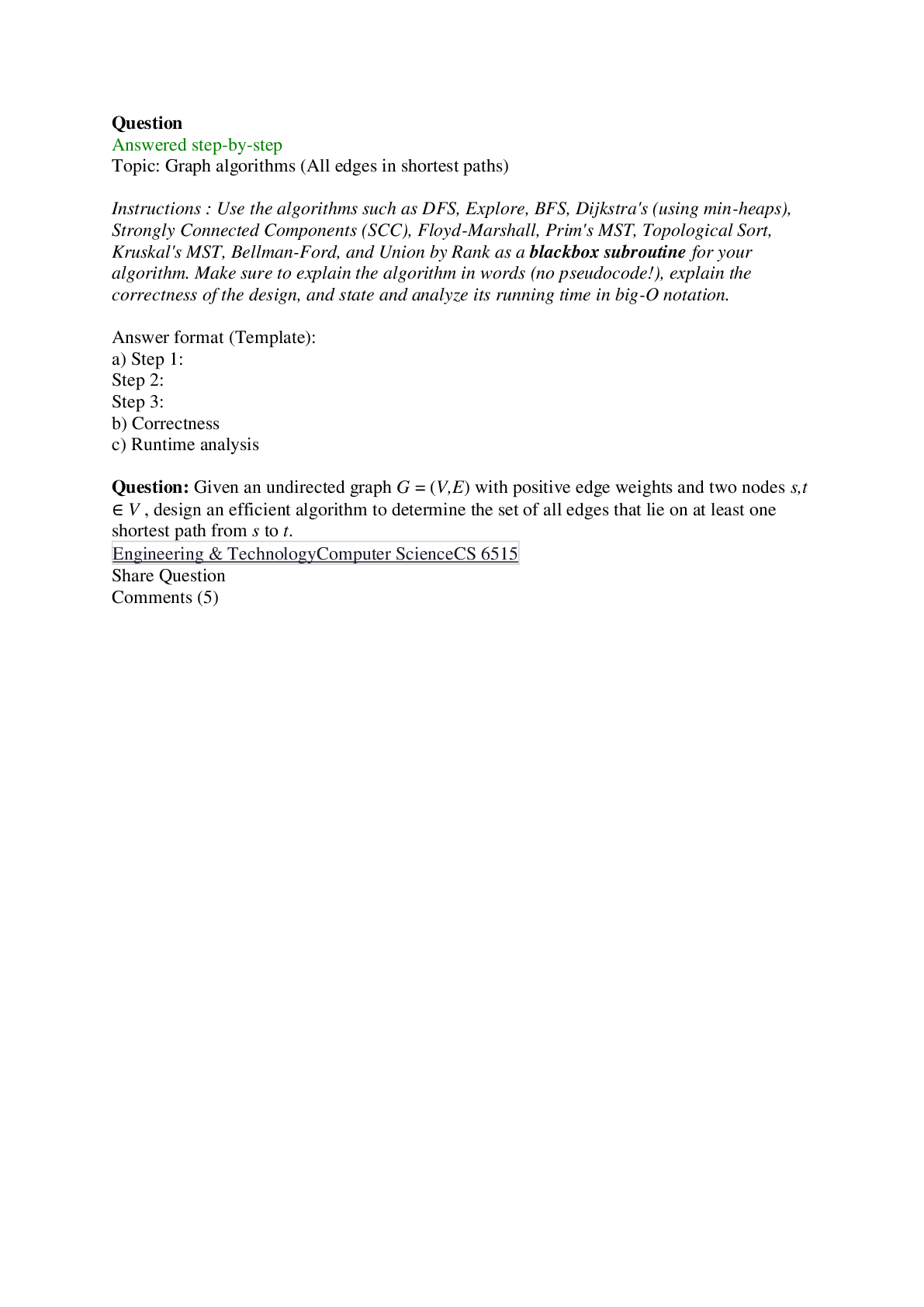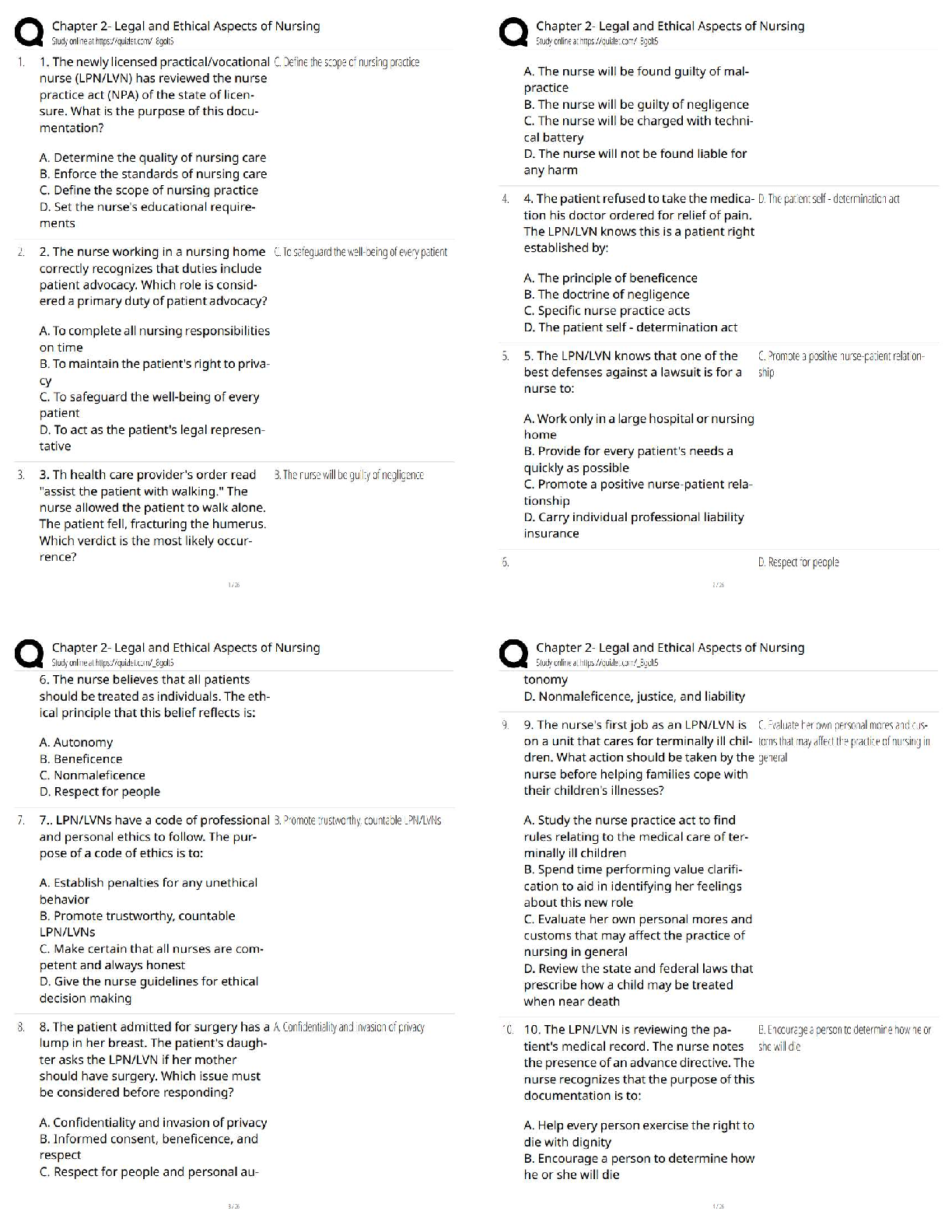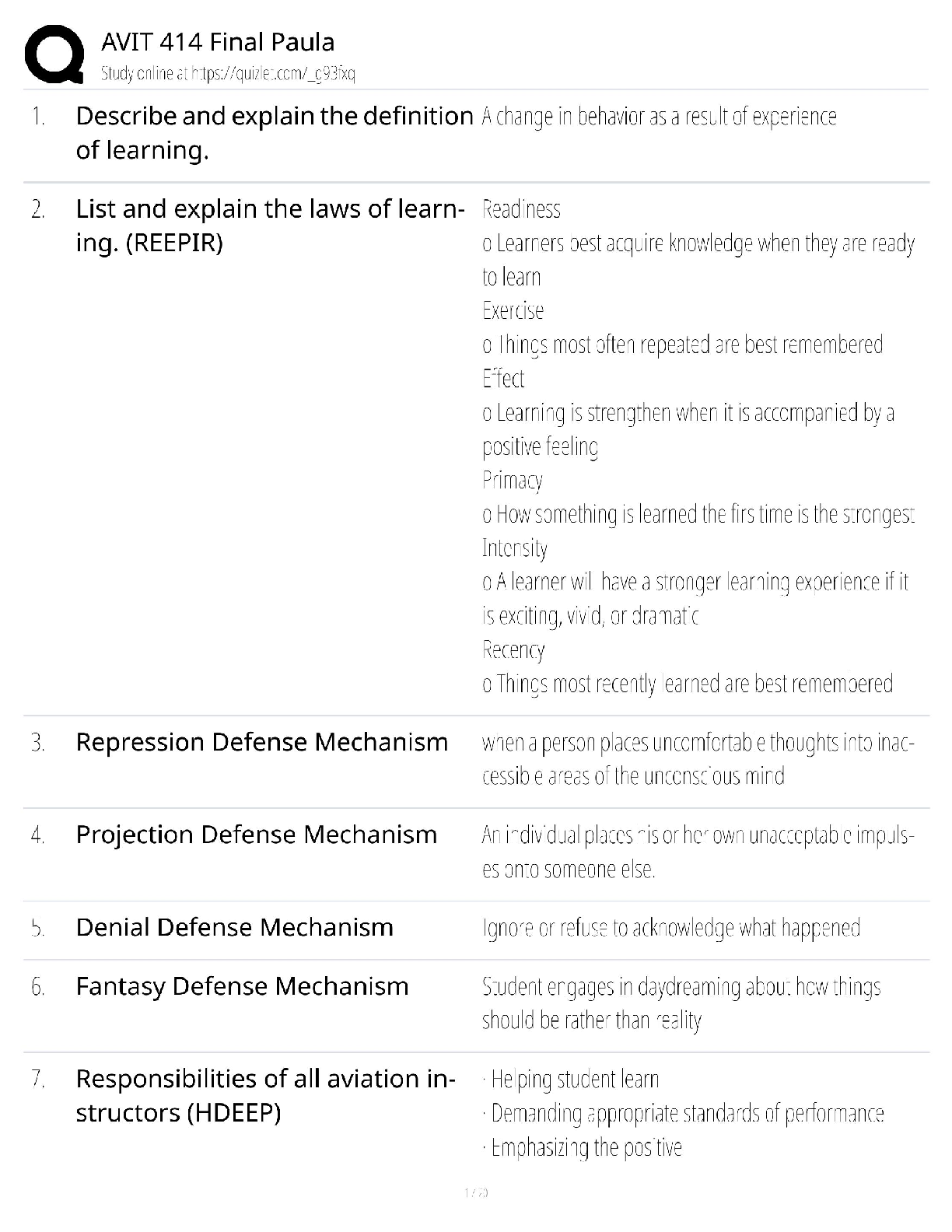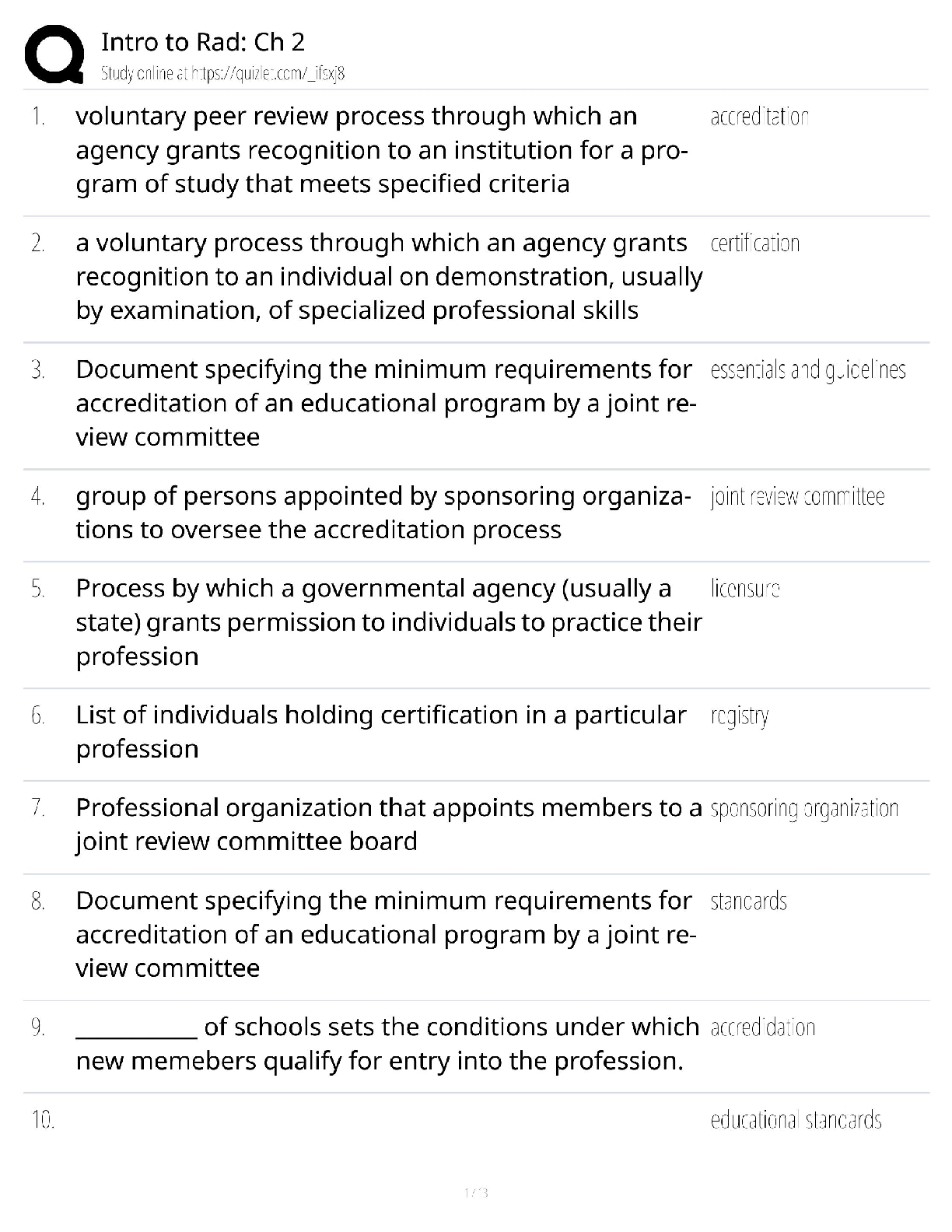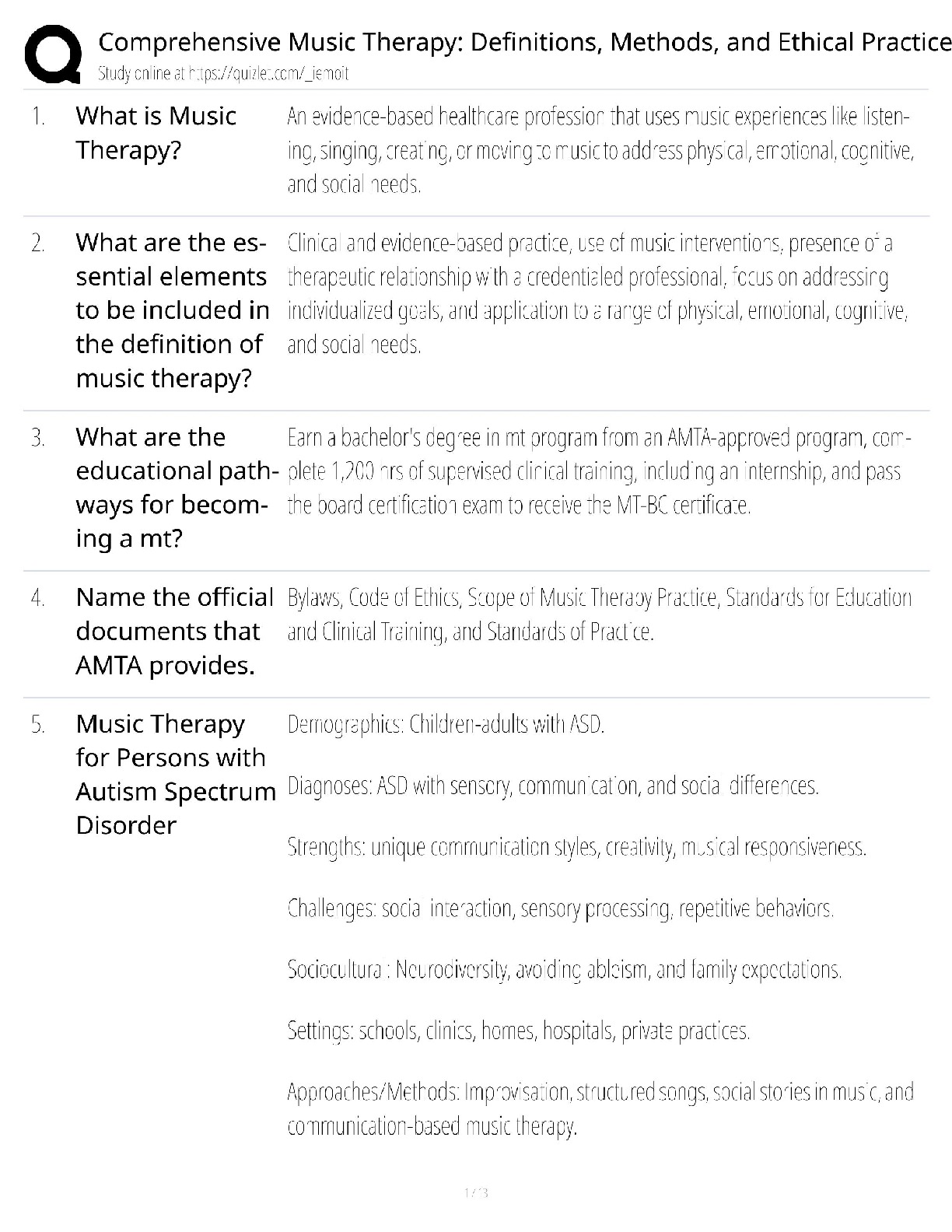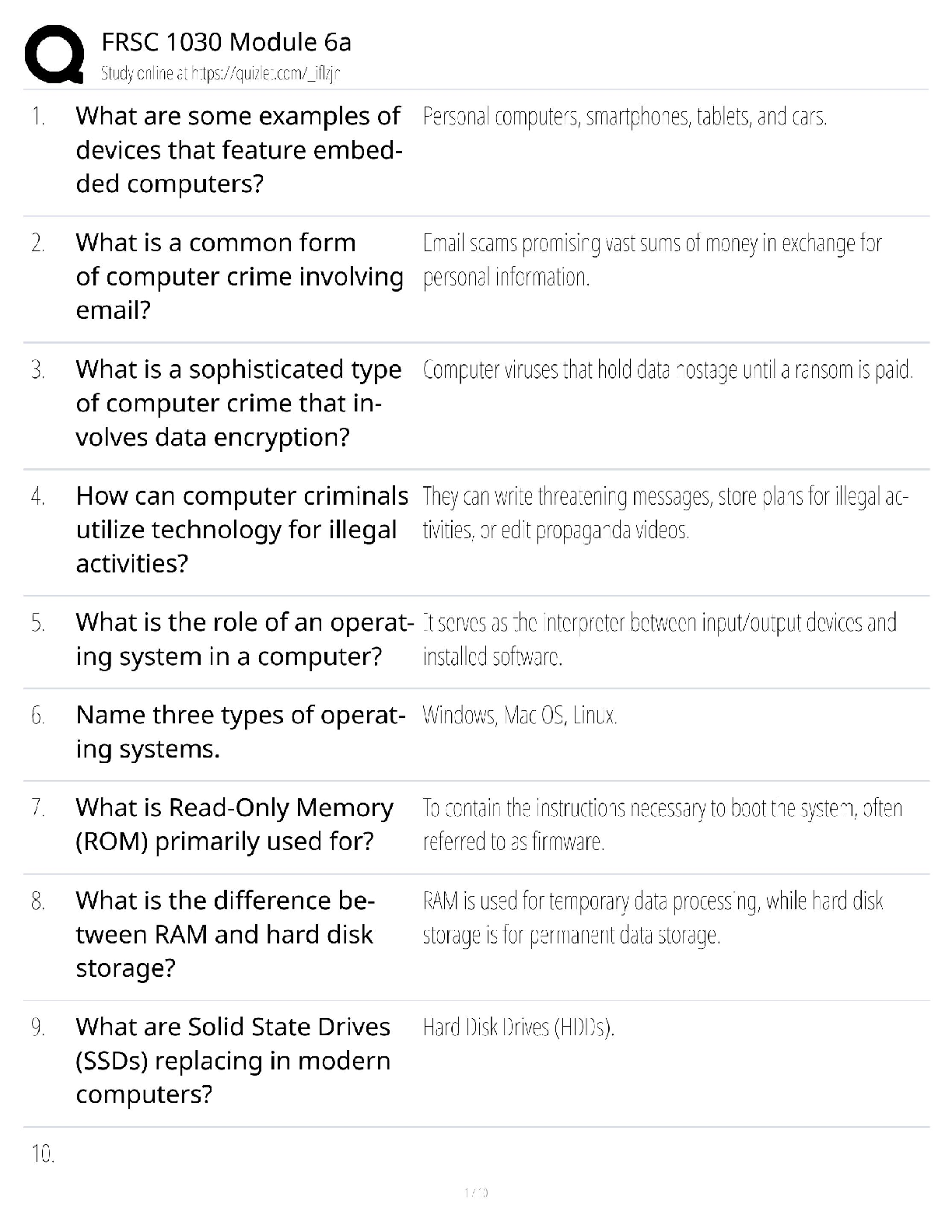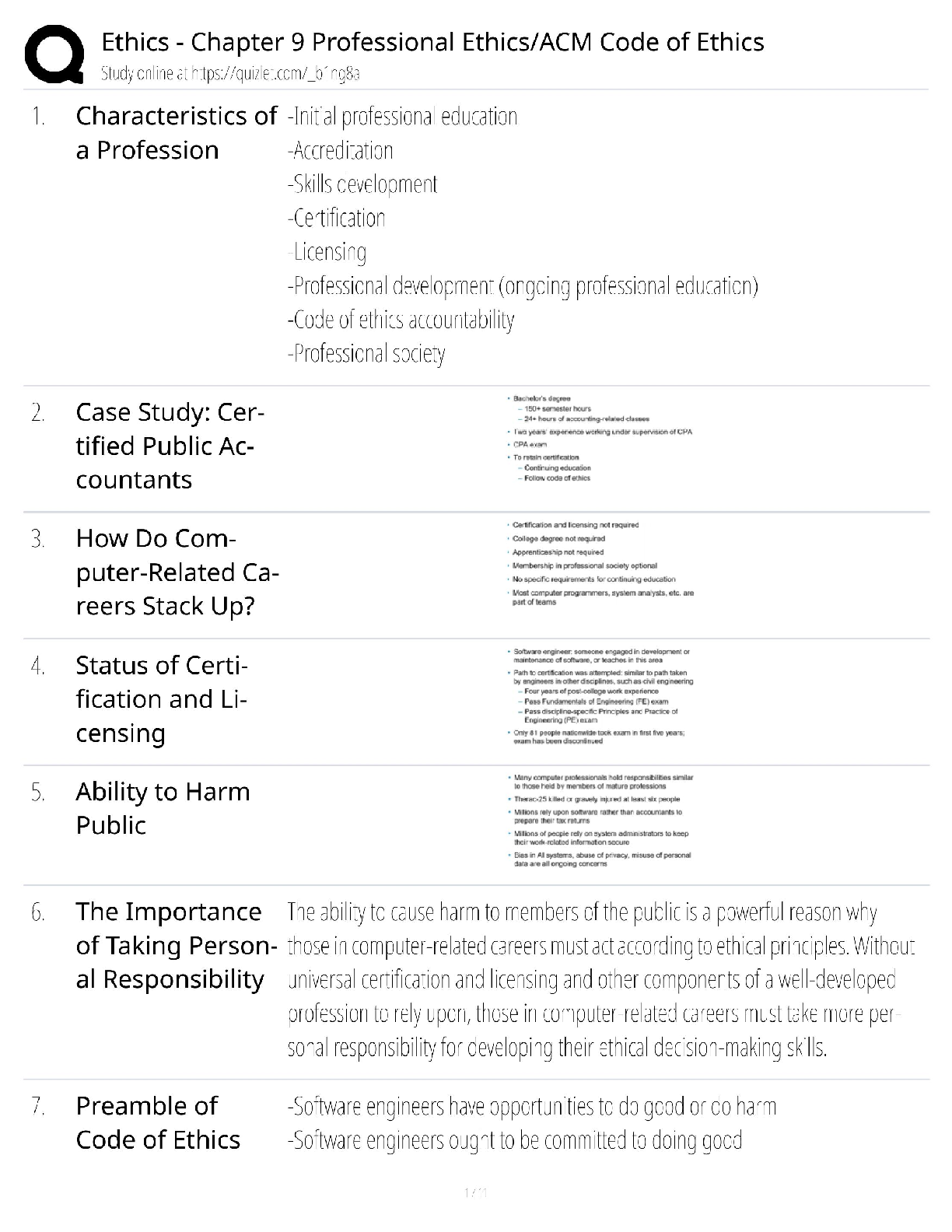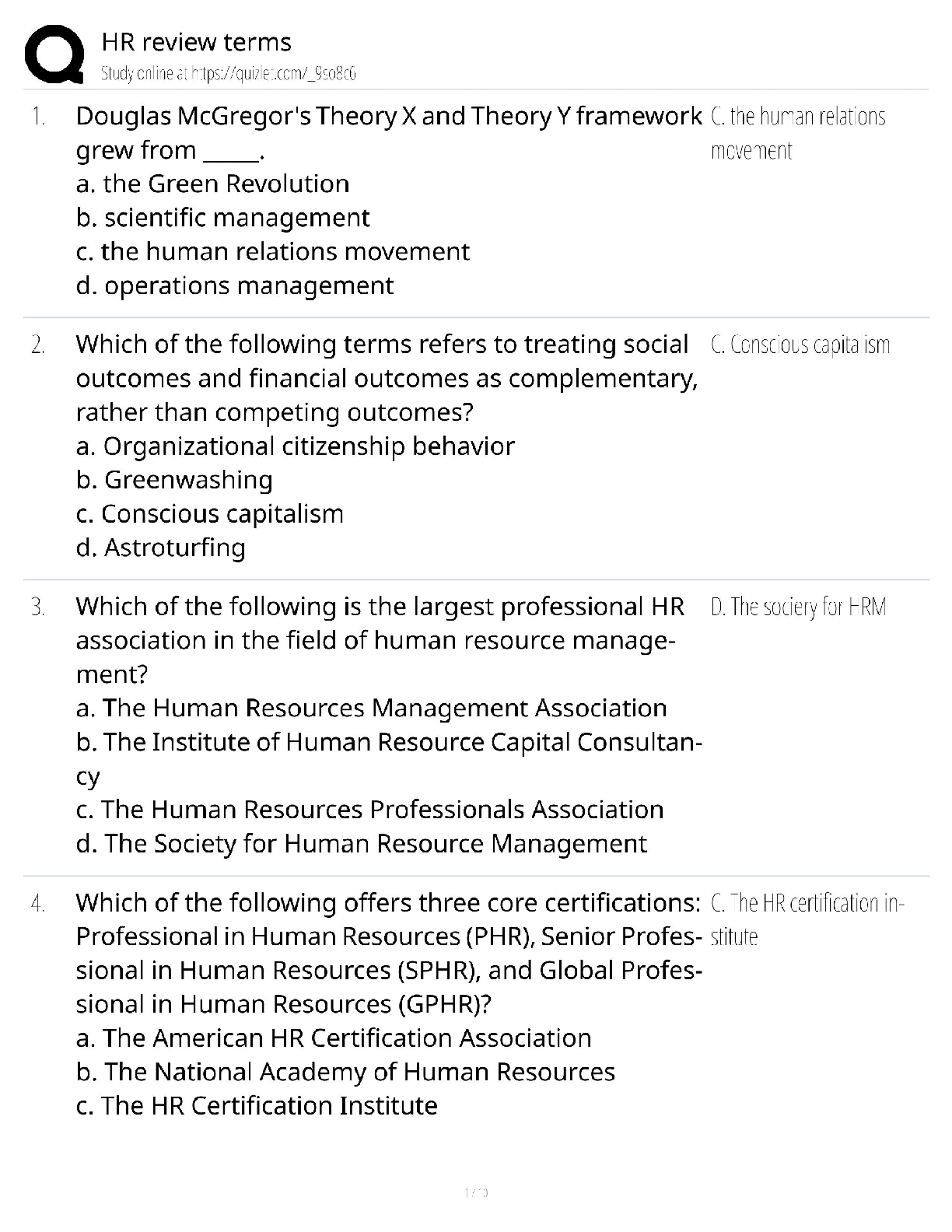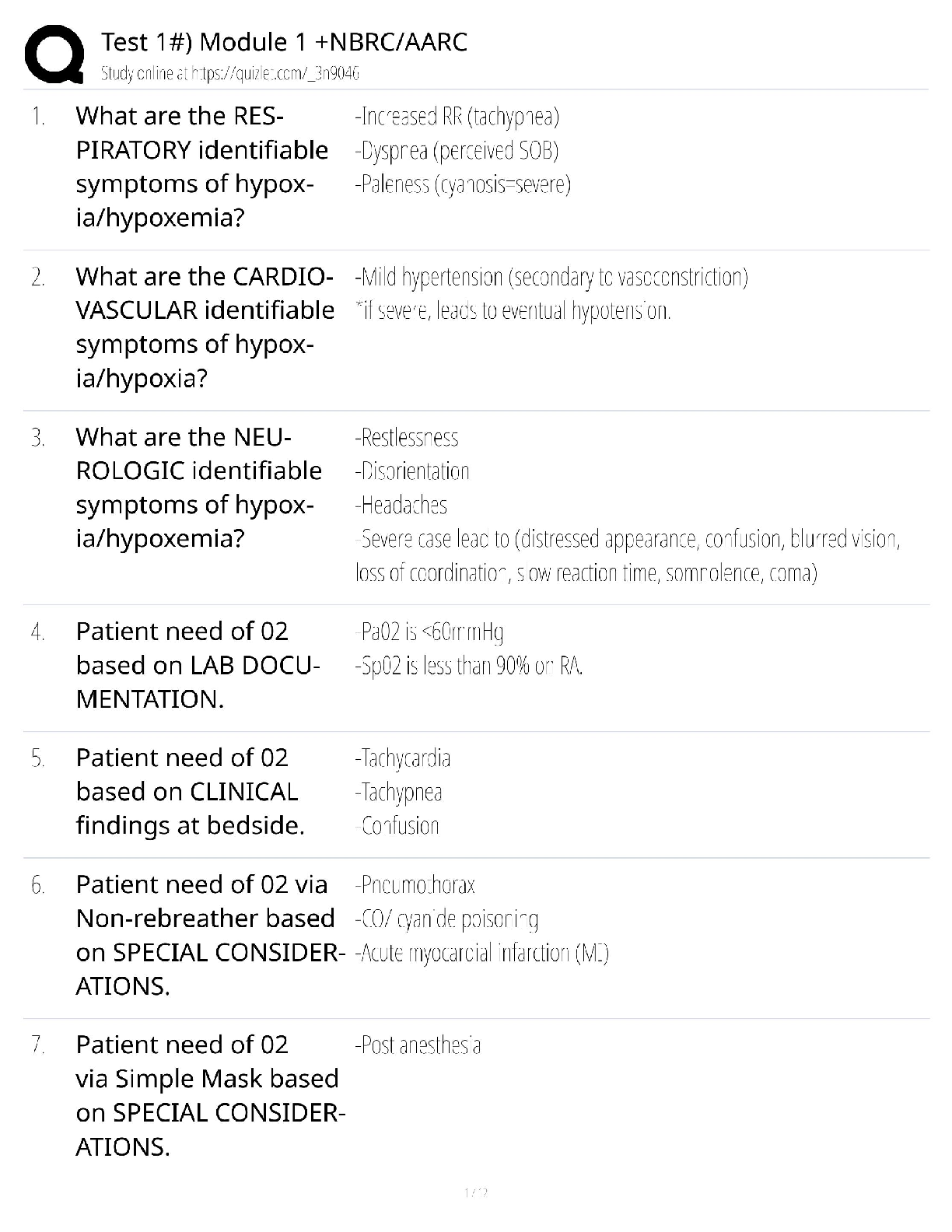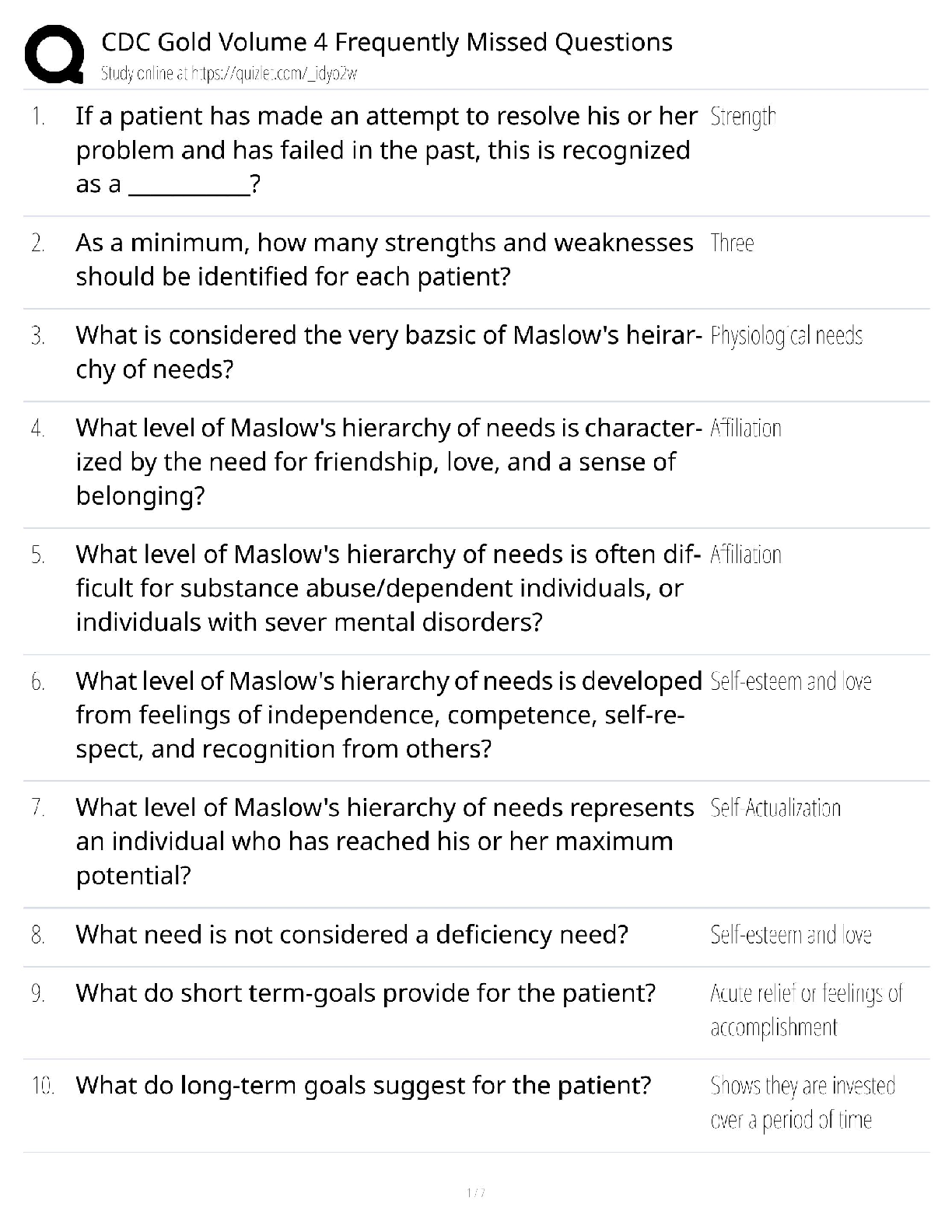Geology > QUESTIONS & ANSWERS > GEO 1010CH06 Assignment Thinking Spatially and Data Analysis - Sub-Saharan Africa - Biomes (All)
GEO 1010CH06 Assignment Thinking Spatially and Data Analysis - Sub-Saharan Africa - Biomes
Document Content and Description Below
CH06 Assignment Due: 11:59pm on Thursday, July 9, 2020 You will receive no credit for items you complete after the assignment is due. Grading Policy Thinking Spatially and Data Analysis - Sub-Sahar ... an Africa - Biomes This exercise is designed to help you observe the pattern in which biomes transition into one another within a single continent, and to understand the links among climate, biomes, and environmental issues in the region. Generally, biomes transition from moist tropical forests along the equator, to dryer savannas and deserts in the low latitudes, then to moister temperate forests in the midlatitudes, and to tundra and polar regions in the high latitudes. The biomes of Sub-Saharan Africa (and, in fact, the entire continent) illustrate this general pattern. Biomes are communities of vegetation and organisms that have evolved in the same habitat. Different environmental issues can be associated with the various biomes, including desertification, pollution, and deforestation. Refer to the climate map below to answer the following questions. Part A On the following map, identify the cities of Addis Ababa, Ethiopia; Bamako, Mali; Cape Town, South Africa; Kisangani, Democratic Republic of the Congo; Lagos, Nigeria; Lusaka, Zambia; Nairobi, Kenya; Tombouctou, Mali; and Walvis Bay, Namibia. Then identify these two important lines of latitude: the equator and the Tropic of Capricorn. Drag the appropriate labels to their respective targets. ANSWER: Correct Part B What is the most common climate type along the equator? Hint 1. What to look for Reset Help Tombouctou, Mali Bamako, Mali Addis Ababa, Ethiopia Equator Lagos, Nigeria Kisangani, Democratic Nairobi, Kenya Republic of the Congo Tropic of Capricorn Walvis Bay, Namibia Cape Town, South Lusaka, Zambia Africa7/8/2020 CH06 Assignment https://session.masteringgeography.com/myct/assignmentPrintView?assignmentID=1547093 2/29 Find the location of the equator on the map. Follow its path across Africa and note the various climate types along that path. ANSWER: Correct Af and Aw (Tropical wet) is the most common climate type along the equator (0° latitude). With the exception of a small region with a Highland climate and another small region with a tropical/subtropical steppe climate along the equator, the remainder of the region has Tropical Wet climate. Part C What climate type is found immediately north and immediately south of the wet climates in the central region of Sub-Saharan Africa? Hint 1. What to look for The wet climates of the central region of Sub-Saharan Africa are denoted by a dark pink and a brick-red color and by the letters “Af,” “Am,” and “Aw.” Locate this region. Then look at the colors and letters to the immediate north and the immediate south of this area. Look at the map legend, located at the lower right-hand box of the map, to find out what this color and letters mean. ANSWER: Correct Tropical and subtropical steppes (BSh) are located immediately to the north and south of the wet climates of the central region of Sub-Saharan Africa, as indicated by the yellow color on the map and the presence of the “BSh” climate type indicator. Part D The cities of Kisangani and Lagos are located in a tropical wet climate, shown in a dark orange color and indicated by the letters “Af.” What is the approximate annual precipitation in these two cities? Use the climographs below to guide you. Hint 1. Where to find annual precipitation for a city BWh (Tropical and subtropical desert) C (Mild midlatitude) Af and Aw (Tropical wet) BSh (Tropical and subtropical steppe) H (Complex mountain climates) H (Complex mountain climates) BWh (Tropical and subtropical desert) Cwb (Marine west coast with dry season) BSh (Tropical and subtropical steppe) Csb (Mediterranean summer—dry)7/8/2020 CH06 Assignment This information is provided on the climographs for the cities of Kisangani and Lagos, immediately beneath the climograph. Keep in mind that the question asks for the approximate annual precipitation. ANSWER: Correct As indicated by the numbers shown below their respective climographs, the annual precipitation is 67.1 inches in Kisangani and 72.3 inches in Lagos. These values are approximately 70 inches. Part E Using the information included in the map and climographs shown below to guide you, which three of the following statements are probably true? Check all that apply. Hint 1. Interpreting climographs and maps in unison Using both the climographs and the map, be sure to understand how different colors are used to symbolize different climate types. Using this information along with the temperature and precipitation information should help you answer the questions below. ANSWER: 10 inches 85 inches 35 inches 70 inches 45 inches Precipitation in the two cities of Mali (Tombouctou and Bamako) is very similar. Two of the cities shown on the map have desert (BWh) climates. The mild midlatitude climates of Sub-Saharan Africa are located south of the Tropic of Capricorn. Temperatures are the key indicator of seasonal changes in Sub-Saharan Africa. Freezing temperatures are highly unlikely in Sub-Saharan Africa.7/8/2020 CH06 Assignment Correct Two of the cities shown on the map, Tombouctou and Walvis Bay, have desert (BWh) climates. Tombouctou’s annual precipitation is 9.1; Walvis Bay’s annual precipitation is 0. [Show More]
Last updated: 1 year ago
Preview 4 out of 29 pages

Loading document previews ...
Buy this document to get the full access instantly
Instant Download Access after purchase
Buy NowInstant download
We Accept:

Reviews( 0 )
$11.00
Can't find what you want? Try our AI powered Search
Document information
Connected school, study & course
About the document
Uploaded On
May 30, 2021
Number of pages
29
Written in
All
Additional information
This document has been written for:
Uploaded
May 30, 2021
Downloads
0
Views
235


